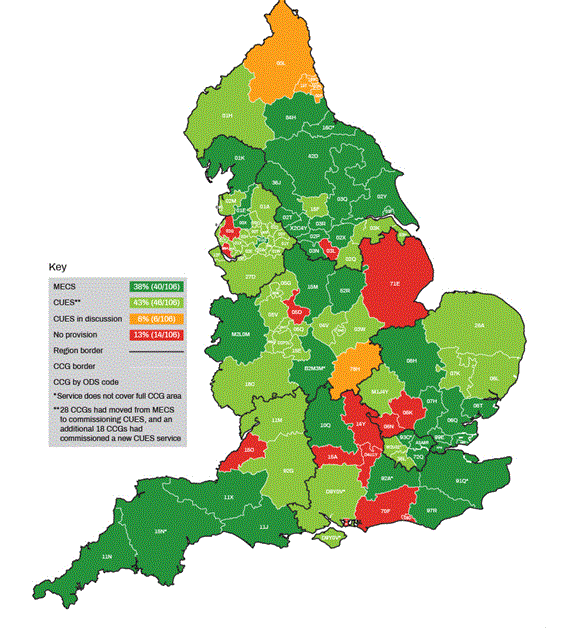LOCs/AOC and Commissioning
Coverage of CUES and MECS
Coverage of CUES and MECS Continues To Increase but More Gaps To Fill
 LOCSU data shows an 11% increase in population coverage with access to either a CUES or MECS services commissioned since the start of the Covid-19 pandemic. In April 2020, 63% of the population had access to a MECS-type service commissioned for delivery by optical practices and by November 2021 this had increased to a total of 74% of the population having access to urgent and emergency eyecare services. These services are a mix of MECs and CUES services.
LOCSU data shows an 11% increase in population coverage with access to either a CUES or MECS services commissioned since the start of the Covid-19 pandemic. In April 2020, 63% of the population had access to a MECS-type service commissioned for delivery by optical practices and by November 2021 this had increased to a total of 74% of the population having access to urgent and emergency eyecare services. These services are a mix of MECs and CUES services.
To break the data down further:
- April 2020 – 62% of CCGs (84/135) had a MECS service commissioned, with 63% population coverage
- Nov 2020 – 77% of CCGs (104/135) have an urgent service commissioned with 75% population coverage
- Nov 2021 – 81% of CCGs (86/106) have an urgent service commissioned with 74% population coverage
There have been a number of CCGs mergers in the past year as seen in the data above. In addition, we have not seen the decommissioning of CUES services across the country, which was a potential risk earlier in the year.
Zoe Richmond, LOCSU Interim Clinical Director said:
“It is good that 74% of the population of England now have access to urgent eye care on their doorstep, delivered by primary care optometrists and their practice teams. However, these services need to be commissioned consistently; people will continue to present to their general practice or accident and emergency department until we are able to deliver a clear and consistent national message.
“People should be advised to contact their local optometry practice with all sight and eye concerns.
“The optometrist is the best placed primary care professional to deliver first contact care for their local populations, I believe this will improve patient experience and opportunity for selfcare as well as delivering treatment to resolution closer to home, for most people.”

























